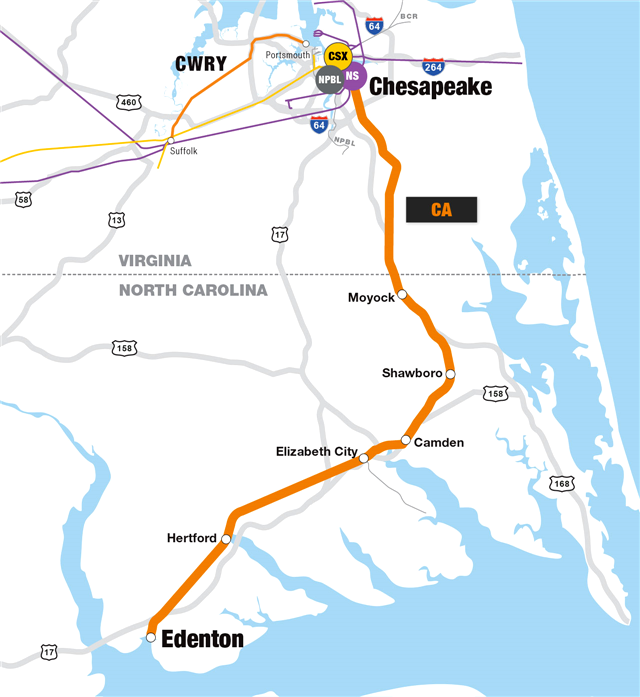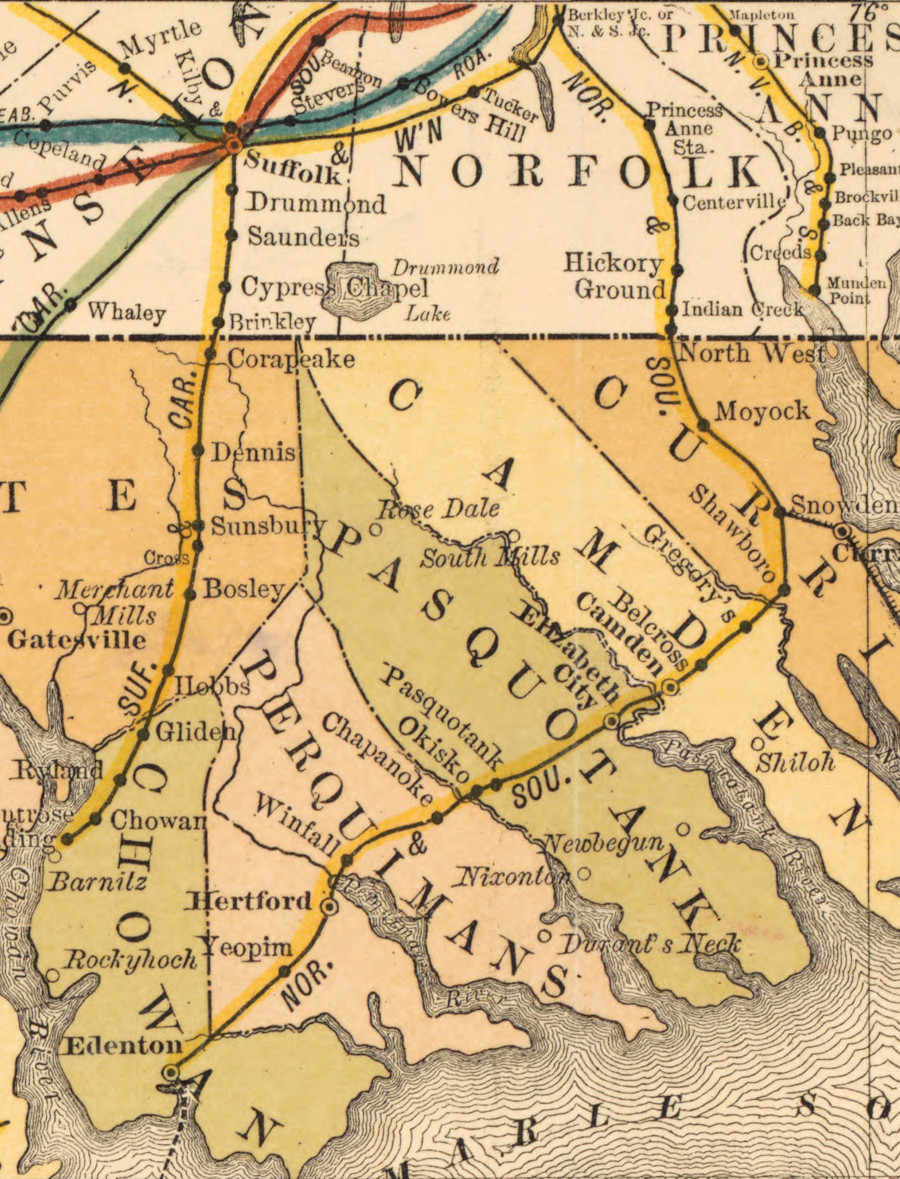
the Chesapeake and Albemarle Railroad is a short-line railroad connecting Hampton Roads with Albemarle/Pamlico Sound in North Carolina
Source: Genesee & Wyoming, Chesapeake and Albemarle Railroad

the Chesapeake and Albemarle Railroad is a short-line railroad connecting Hampton Roads with Albemarle/Pamlico Sound in North Carolina
Source: Genesee & Wyoming, Chesapeake and Albemarle Railroad
In 1990, the modern Norfolk Southern Railroad created the Chesapeake and Albemarle Railroad as a "shortline" and leased to it the track between Chesapeake and Edenton. That route was started by the Elizabeth City & Norfolk Railroad Company in 1881. It became part of the original Norfolk Southern Railroad which had operated between 1883-1982, before being folded into the modern Norfolk Southern Railroad.

the Elizabeth City & Norfolk Railroad Company built the first track in 1881 along the route now used by the Chesapeake and Albemarle Railroad
Source: University of North Carolina Libraries, Railroad map of North Carolina 1900 (bt Henry C. Brown, 1900)
RailTex, an independent operator, was the first company to operate trains on that stretch under the modern Norfolk Southern's Thoroughbred Shortline Program.
The bridge over the Chowan River from Edenton to Mackeys was removed in the 1990's. The amount of traffic did not just the expense of maintaining/replacing the structure, but removing it blocking any potential for the Chesapeake and Albemarle Railroad to get traffic from south of Edenton.
RailAmerica acquired the shortline lease in 2000. Genesee & Wyoming acquired it in 2012.1
Today the Chesapeake and Albemarle Railroad links the City of Chesapeake to Edendon, North Carolina. Of its 69 miles, 18 are in Virginia. The short line services primarily industrial customers located along the Elizabeth River, including readymix plants and agricultural customers shipping soybeans and grain.2